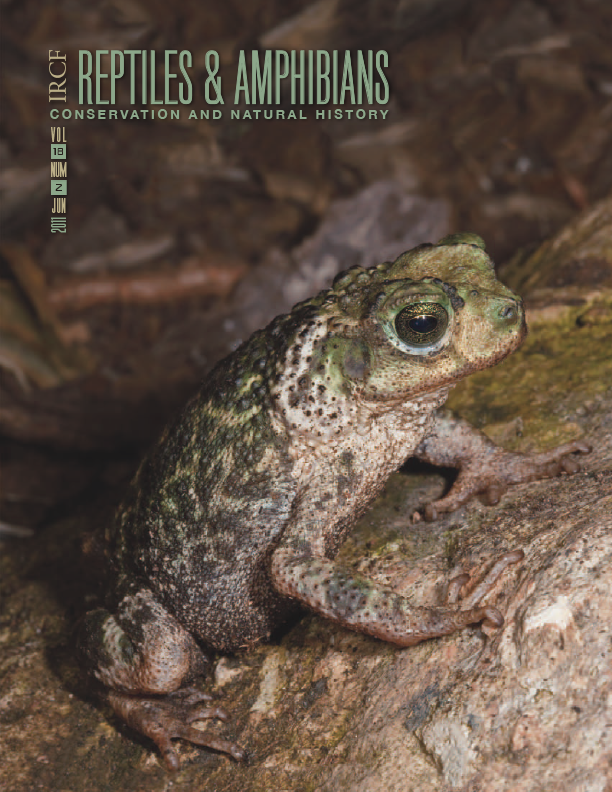Body-coiling Behavior in the Three-toed Amphiuma (Amphiuma tridactylum)
DOI:
https://doi.org/10.17161/randa.v18i3.16174Abstract
Salamanders coil their bodies for a variety of reasons, but primarily as a response to predators. For the aquatic salamander Amphiuma, all reports on coiling are associated with nest attendance, although another notion has made it into the literature, that Amphiuma coils its body to reduce evaporative water loss of the adult. We inadvertently tested this notion via another study on temperature preference in an aquatic thermal gradient. Because nearly half of our observations were of tightly coiled individuals underwater, we conclude that this behavior is not for reducing evaporative water loss, but more likely a defensive posture.
Downloads
Published
Issue
Section
License

This work is licensed under a Creative Commons Attribution-NonCommercial 4.0 International License.
Copyright is held by the authors. Articles in R&A are made available under a Creative Commons Attribution-NonCommercial 4.0 International license.

